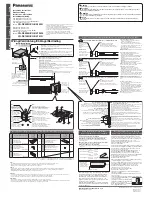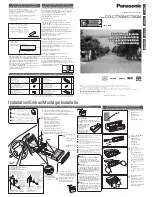
AFS60 AFM60 EIP WEB operating instructions
7
1.2. Output I / O assembly attribute data format
Table 4. Format of output assembly 106
Instance
Byte
Bit 7
Bit 6
Bit 5
Bit 4
Bit 3
Bit 2
Bit 1
Bit 0
106
0
Preset Value (low byte)
1
Preset Value
2
Preset Value
3
Preset Value (high byte)
4
Sync Preset Value (low byte)
5
Sync Preset Value
6
Sync Preset Value
7
Sync Preset Value (high byte)
Table 5. Description of output assembly 106
Byte
Name
Description
Standard
0-3
Preset
Value
The Preset Value is transferred to the encoder and
saved.
0
4-7
Sync Preset
Value
Sync Preset Value
1
Function of sync Preset Value
The setting is done not before this value changes from “0” to “1”. The Preset Value can be reset.
(Only a change in the Preset Value is not accepted, even if the network connection disconnects and reconnects.)
Preset
The preset function is used to set the encoder to a predefined start position. With the aid
of a Preset Value the encoder can be set to any position within the measuring range.
The Preset Value can be set in the following manner:
• Using the preset push-button (encoder)
•
Using an acyclic explicit message (PLC)
(During this process the Preset Value is transferred as an attribute (ID19) of the position sensor object)
• Using the WebServer preset (WebBrowser)
•
Using the PLC preset (output assembly 106)
Warning!
Only set a Preset Value when the encoder is at standstill
Note:
By using the preset function via output assembly 106, the sync Preset Value (Byte 4–7)
has to be set from “0” to “1”. This rising edge is the trigger for Preset Value acceptance.
The preset function results in an immediate change in the position value output by the
encoder. This change could cause an unexpected movement that may result in a hazard for
persons or damage to the system or other items. See AFS60 / AFM60 EtherNet / IP Opera-
ting instruction, chapter 3.5.7 page 36.
© SICK AG• Germany • All rights reserved
8018909/1EH9/2021-12-16
Subject to change without notice
















































